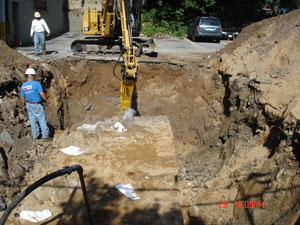 It’s becoming a lot more common for people considering buying property in New York or New Jersey to order a Phase 1 Environmental Site Assessment before finalizing their purchase. In fact, many lenders now require this report before making their own final funding decision.
It’s becoming a lot more common for people considering buying property in New York or New Jersey to order a Phase 1 Environmental Site Assessment before finalizing their purchase. In fact, many lenders now require this report before making their own final funding decision.
Here at Walden, we’re experts at conducting the Phase 1 Environmental Site Assessment, so we’re often asked about it. These are the questions we’re most frequently asked:
What is it?
The Phase 1 Environmental Site Assessment reviews the history of a particular parcel of land and any structures on it to determine if hazardous substances or petroleum products are present. It’s part of federal and state efforts to identify and clean up lingering contamination.
How does it work?
It’s primarily a research project that includes examining maps, business directories, etc. and public records that relate to the property. Research can also include personal interviews with current or past owners or tenants, on-site visual inspection and sometimes collecting a few samples or minor testing.
The goal is to gather information that dates to when the property was first used commercially, because certain types of businesses such as automotive enterprises, dry cleaners, photo shops or manufacturing are more likely to handle and store hazardous chemicals.
Who does the work?
It’s important to hire an environmental engineering professional to conduct your Phase 1 Environmental Site Assessment. They know exactly what to look for, especially the more subtle indications that problems could exist. And depending on what they find, they can give you the most complete and accurate advice regarding your options.
What does it cost?
Not as much as ignoring it and discovering too late that your newly-purchased property is contaminated. Actually, a Phase 1 ESA is not particularly costly because it’s designed to be an overview, not an in-depth scientific study.
What happens next?
Your investigator will provide you with a full report of their research and findings, including recommendations for next steps, if any. The report is just for you and your lender, not for any regulatory agency. You could learn the property is contamination-free, or it could have relatively minor pre-existing problems. It could be seriously contaminated or suspicious enough to warrant a far more detailed Phase II environmental site assessment.
Regardless of the outcome, you’ll know a lot more about the property than when you started.
Let us know if you have more questions.
